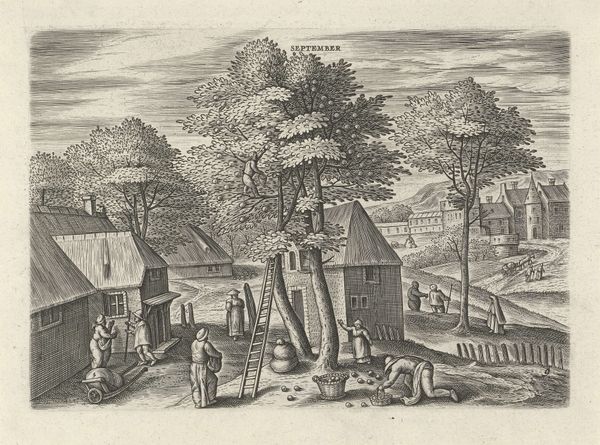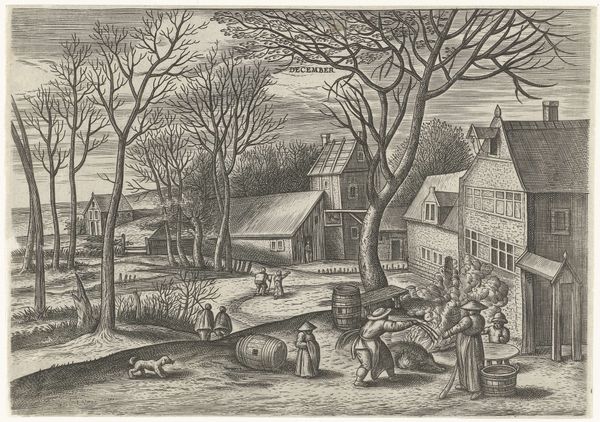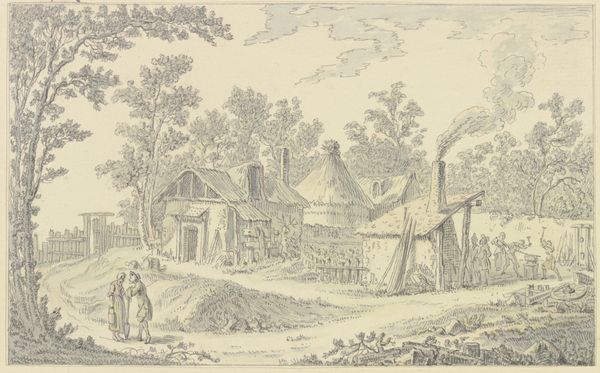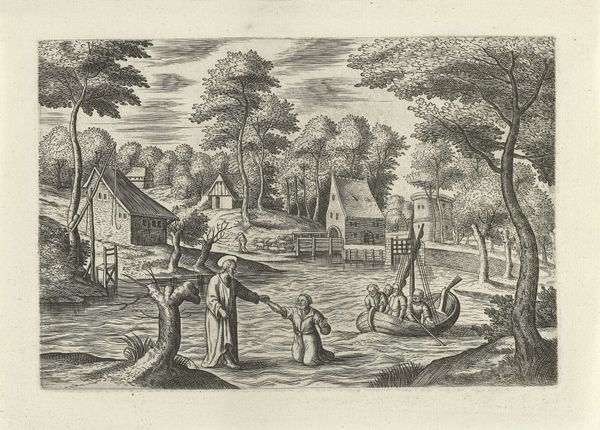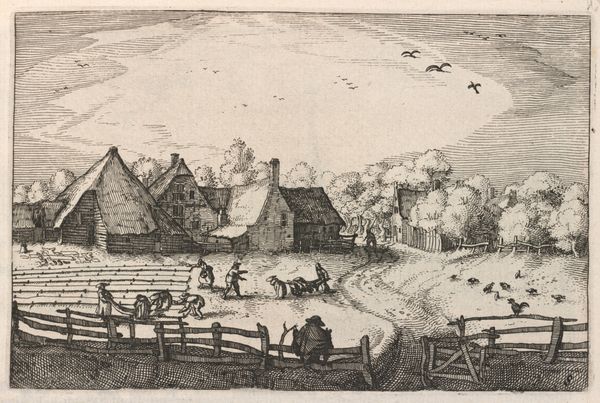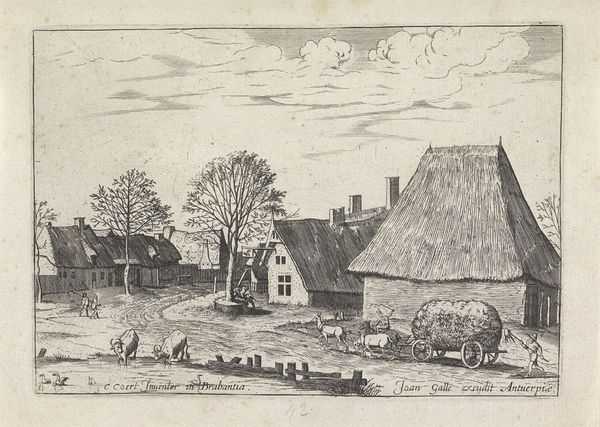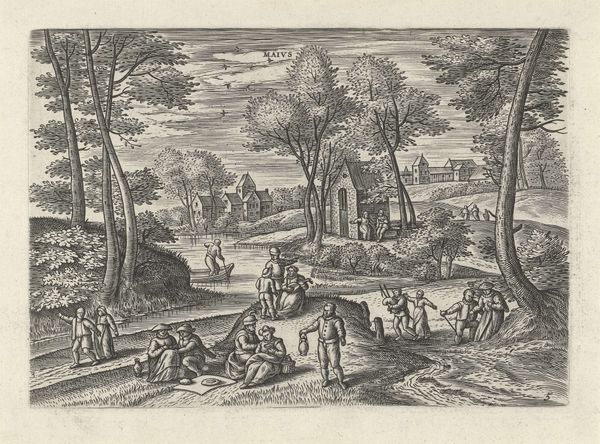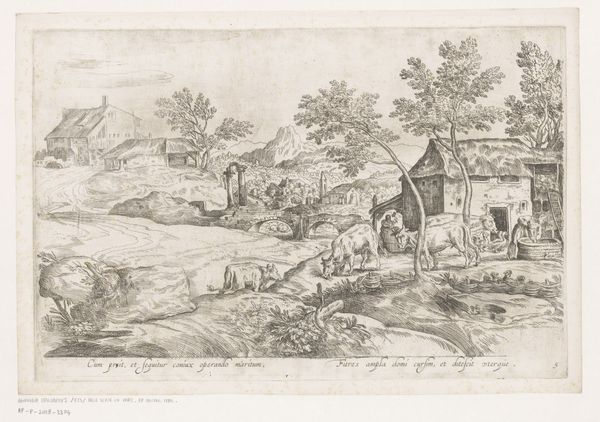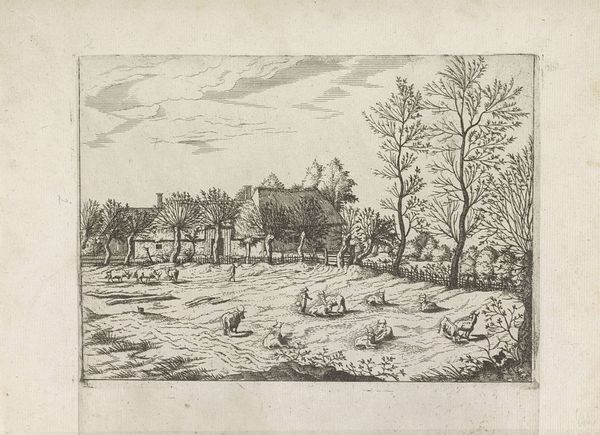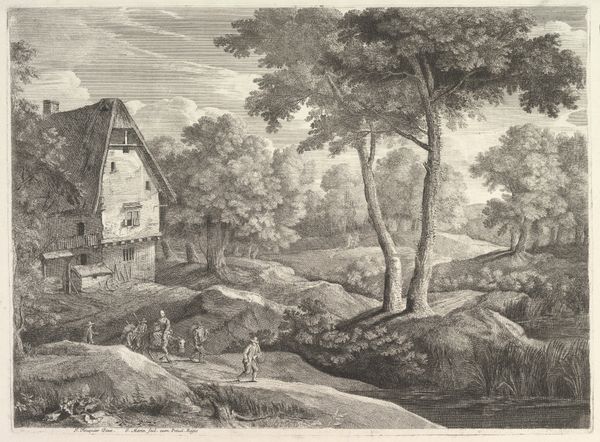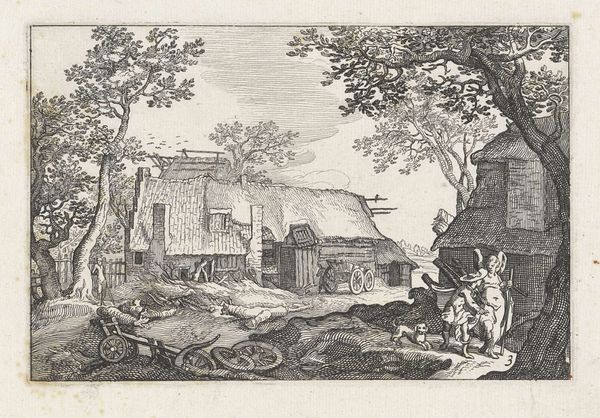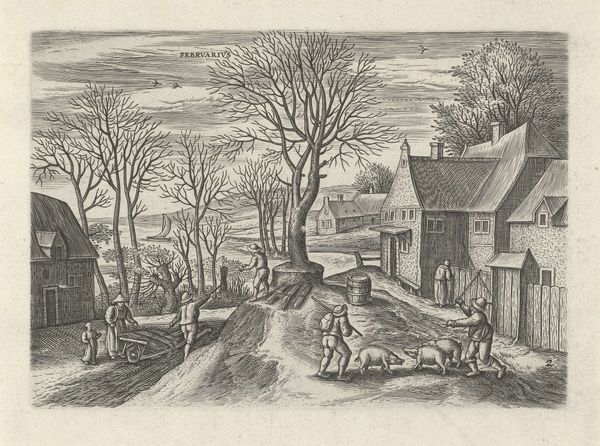
drawing, print, etching, engraving
#
drawing
#
dutch-golden-age
# print
#
pen sketch
#
etching
#
landscape
#
engraving
#
realism
Dimensions: width 165 mm, height 116 mm
Copyright: Rijks Museum: Open Domain
This is "Juni," an engraving made by Julius Goltzius, sometime between 1500 and 1595. The meticulous detail, achieved through precise lines, gives the pastoral scene a tranquil yet ordered feel. The composition is carefully structured, with the landscape divided into distinct zones. Notice how the foreground figures and animals lead the eye towards the buildings in the midground, and finally to the sky above. This structured arrangement reflects a classical approach to landscape art. Goltzius uses line to define form, create texture and convey depth. The cross-hatching technique builds up shadow and volume, giving a sense of three-dimensionality to the otherwise flat surface. The structured lines and the contrasting tones create a harmonious balance. It invites us to contemplate the relationship between humanity, nature, and the passage of time. Ultimately, "Juni" presents a world viewed through the lens of careful observation and structured composition, reflecting deeper cultural values of harmony, order and the human connection to the natural world.
Comments
No comments
Be the first to comment and join the conversation on the ultimate creative platform.
